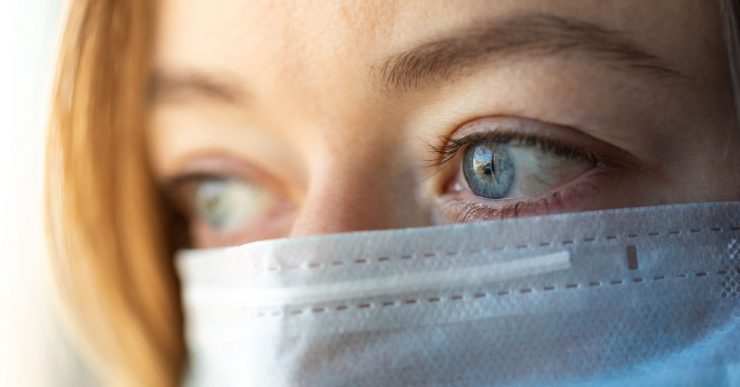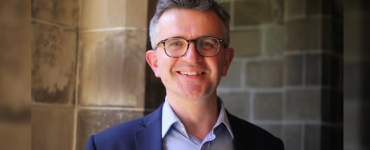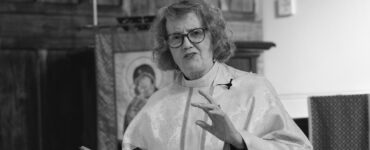Kimmy? Kimmy? Kimmy, now look at me. Look at me Kim. Look at moi. Look at moi. Now, I’ve got one word to say to you, Kim. Mask.
When we want someone’s full attention, as Kath so often does with her self-absorbed daughter Kim, we need them to look at us, face to face. It is a parent’s perennial request and a diplomat’s most subtle dynamic. Greek drama and Japanese theatre use masks to heighten our attention, paradoxically, to what is being played out on stage.
Whether we know it or not, we all have ways of masking ourselves, and people with whom we feel safe to remove them.
How are you managing with your face mask? Those of us still in stage 4 lockdown in Melbourne are now well practised at wearing a face mask the moment we leave home. Some people wear medical style ones, others have homemade efforts, and a few wear stylish fashion masks in Liberty prints or Indigenous designs. The government doesn’t care about your sartorial choices, just that you wear one, everywhere, every time, to reduce the risk of spreading the COVID-19 virus.
Of course, wearing a mask obscures the faces we rely upon to reveal who we are. Our families and friends recognise us by our faces. We smile with delight when we see theirs. A smile is one of the first facial expressions we see on being born. A baby’s first smile is a longed for early milestone in the love between parent and child. Smiles are uniquely human, they are a kind of blessing one person confers upon another, and a genuine smile shines with the presence of the whole self behind the face. So, not being able to see one another’s smiles behind the obligatory masks is a temporary diminishment of our individuality, even if it is for everyone’s good.
The Roman philosopher Cicero said, “The face is a picture of the mind as the eyes are its interpreter.” This is why faces are so important to us. A face is like a lamp lit by the person behind it. This is how we know who they are, and who we are in relation to them. We see the light as it shines on us, and know ourselves to be in good favour or not. The psalms frequently draw on this imagery. The hope of a face to face encounter with God fills the whole collection of prayers, especially in difficulties. This, for instance, “There are many who say ‘Who will show us any good? The light of your countenance, O Lord, has gone from us’” (Ps. 4.6. APBA). Or, “How long, O Lord, will you so utterly forget me: how long will you hide your face from me?” (Ps 13.1 APBA).
The apostle Paul turns longing and hope into promise when he writes that now we see through a glass, darkly, ‘but then face to face’ (1 Cor. 13.12). One of my most loved images of the incarnation is an expression used by Bishop John Robinson for the title to his book on Christology, The Human Face of God. Unlike Moses, who was forbidden to see God’s face, we see, dwelling in Jesus of Nazareth, ‘God in all God’s fullness,’ looks us in the face (Col. 1.19).
A mask is necessary just now for our health’s sake, but a mask is no protection or defence against God’s face looking upon us, nor does it need to be. God’s loving gaze reveals more than we can comprehend, and all that we long for. So wear a mask when out and about, but not when turning your face to God.
Revd Dr Colleen O’Reilly is an Adjunct Lecturer at Trinity College Theological School.







Add comment